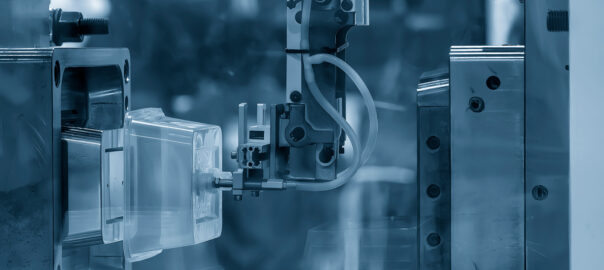Thermoforming is a versatile and cost-effective manufacturing process for producing plastic parts. Developing a strong sourcing strategy for thermoforming can help you optimize costs, maintain quality, and ensure a reliable supply chain. This comprehensive guide will walk you through the key steps in creating a robust sourcing strategy for your thermoforming needs.
1. Define Your Product Requirements
Start by clearly outlining your product specifications:
-
Material type and grade: Consider not just the polymer type (e.g., PETG, PS, PP), but also specific grades, additives, and color requirements.
-
Part dimensions and tolerances: Specify critical dimensions, wall thickness variations, and allowable tolerances.
-
Surface finish requirements: Define texture, gloss level, and any decorative elements needed.
-
Production volumes: Outline annual volume needs, including any seasonal fluctuations.
-
Intended use and environmental factors: Consider factors like food contact, UV resistance, or chemical compatibility.
Example: A food packaging manufacturer requiring clear PETG trays with a specific oxygen transmission rate, suitable for high-speed form-fill-seal lines.
2. Research Potential Suppliers
Look for suppliers with expertise in thermoforming:
-
Use industry associations and directories: Explore resources like the Society of Plastics Engineers (SPE) Thermoforming Division.
-
Attend packaging and plastics trade shows: Visit events like Pack Expo or Thermoforming Conference & Exhibition.
-
Leverage online platforms and forums: Utilize B2B platforms like ThomasNet or industry-specific forums.
-
Seek recommendations from industry contacts: Tap into your network for referrals and experiences.
Pro tip: Create a initial list of at least 10-15 potential suppliers to ensure a comprehensive evaluation.
3. Assess Supplier Capabilities
When evaluating potential thermoforming suppliers, consider:
-
Equipment capabilities: Assess forming area, maximum draw depth, and pressure or vacuum forming capabilities.
-
In-house tooling and design capabilities: Evaluate their ability to design and manufacture molds in-house.
-
Post-forming operations: Check for capabilities in trimming, drilling, assembly, and decorating.
-
Quality control measures: Inquire about in-line inspection systems, material testing, and quality certifications.
-
Production capacity and lead times: Ensure they can meet your volume requirements and delivery schedules.
Example: A medical device company chose a supplier with cleanroom thermoforming capabilities and ISO 13485 certification, despite higher costs, to ensure compliance with stringent quality requirements.
4. Request Detailed Quotes
Prepare a comprehensive Request for Quotation (RFQ) including:
-
Detailed product specifications: Provide 3D CAD files, 2D drawings with critical dimensions, and material specifications.
-
Expected production volumes: Include current needs and projected growth over 2-3 years.
-
Quality requirements: Specify critical-to-quality (CTQ) characteristics and acceptable quality levels (AQL).
-
Delivery expectations: Outline your inventory management strategy (e.g., kanban, consignment inventory).
-
Any special packaging or handling needs: Specify any unique requirements for storage or transportation.
Best practice: Include a non-disclosure agreement (NDA) to protect your intellectual property when sharing designs.
5. Evaluate Material Sourcing
Consider suppliers’ approach to material sourcing:
-
Relationships with resin suppliers: Assess their buying power and ability to secure competitive material pricing.
-
Specialty material sourcing: Verify their capability to source or work with specialty materials like high-performance plastics or custom color matches.
-
Material recommendations: Look for suppliers who proactively suggest material alternatives to optimize cost and performance.
-
Inventory management: Understand their approach to material inventory to ensure consistent supply.
Insight: Some advanced thermoformers are partnering directly with resin manufacturers to develop custom formulations for specific applications.
6. Analyze Total Cost of Ownership
Look beyond just the unit price and consider:
-
Tooling costs and amortization: Understand the initial tooling investment and how it’s amortized over production runs.
-
Shipping and logistics expenses: Factor in transportation costs, especially for large or bulky thermoformed parts.
-
Potential for volume discounts: Negotiate tiered pricing based on annual volumes.
-
Cost of quality: Consider the supplier’s reject rates, rework capabilities, and warranty policies.
-
Secondary operations: Factor in costs for additional processes like assembly or decorating.
Example: A consumer goods company found that a slightly higher piece price from a supplier offering in-house assembly ultimately lowered their total cost by eliminating the need for a separate assembly operation.
7. Assess Technical Support and Innovation
Choose suppliers who can contribute to your product development:
-
Design for manufacturability (DFM) expertise: Look for suppliers who can provide input on part design to optimize for thermoforming.
-
Prototyping capabilities: Assess their ability to produce quick turnaround prototypes for design validation.
-
Material expertise: Evaluate their knowledge of new materials and ability to recommend alternatives.
-
Process innovations: Consider suppliers investing in advanced technologies like in-mold labeling or multi-layer forming.
Example: An automotive supplier partnered with a thermoformer to develop a twin-sheet formed HVAC duct, reducing weight and assembly time compared to the previous injection molded design.
8. Implement a Balanced Sourcing Approach
Consider a mix of sourcing strategies:
-
Single source for specialized or low-volume parts: This can be beneficial for complex parts requiring significant supplier expertise.
-
Dual sourcing for critical components: Maintain relationships with multiple suppliers for high-volume or critical parts to mitigate supply chain risks.
-
Regional sourcing: Balance between local suppliers for quick-turn needs and potentially lower-cost offshore options for higher volumes.
Strategy: Aim for an 70/30 split between primary and secondary suppliers for key components to maintain leverage while fostering strong partnerships.
9. Establish Strong Supplier Relationships
Foster long-term partnerships with key suppliers:
-
Regular performance reviews: Conduct quarterly business reviews to discuss KPIs and improvement opportunities.
-
Collaborative problem-solving: Engage suppliers in addressing challenges and optimizing processes.
-
Shared continuous improvement initiatives: Work together on cost reduction projects or quality enhancements.
-
Clear communication channels: Establish points of contact for different aspects (e.g., technical, commercial, quality).
Example: Implement a supplier scorecard that tracks key performance indicators (KPIs) like quality, on-time delivery, responsiveness, and cost-saving initiatives.
10. Stay Informed and Adaptable
Keep your sourcing strategy current by:
-
Monitoring industry trends: Stay updated on new thermoforming technologies, materials, and sustainability initiatives.
-
Regularly reassessing market conditions: Keep an eye on resin pricing trends and global economic factors affecting the plastics industry.
-
Being open to new suppliers: Periodically evaluate new entrants to the market that may offer innovative capabilities.
Trend to watch: The increasing use of recycled and bio-based materials in thermoforming, driven by sustainability goals and regulatory pressures.
11. Innovative Approaches to Thermoforming Supplier Sourcing and Management
To gain a competitive edge in thermoforming sourcing, consider these unique insights and perspectives:
a) Agile Tooling Partnerships
Develop flexible relationships with tooling suppliers:
-
Modular mold design: Partner with suppliers who specialize in creating modular thermoforming molds, allowing for quick product changes and reduced tooling costs.
-
3D printed molds: Explore suppliers utilizing additive manufacturing for rapid prototyping and low-volume production molds.
-
Tool-sharing programs: Create consortiums with non-competing companies to share costs of expensive thermoforming tools.
Example: A packaging company collaborated with a tooling supplier to develop a modular mold system, reducing new product introduction time by 40%.
b) Material Science Collaborations
Foster partnerships focused on material innovations:
-
Bio-based sheet suppliers: Work with suppliers developing sustainable thermoforming materials like PLA or PBS.
-
Nanotechnology integration: Partner with material scientists to incorporate nanotechnology into thermoformed products for enhanced properties.
-
Multi-material thermoforming: Seek suppliers experimenting with co-extrusion or laminated sheets for multi-functional parts.
Insight: Some companies are partnering with universities to develop proprietary thermoforming materials with enhanced barrier properties for food packaging.
c) Hybrid Manufacturing Approaches
Look for suppliers offering complementary processes:
-
Thermoforming + additive manufacturing: Find partners capable of combining 3D printing with thermoforming for unique geometries or integrated electronics.
-
In-mold labeling expertise: Prioritize suppliers with experience in IML-T (In-Mold Labeling for Thermoforming) for high-quality decorated parts.
-
Thermoforming + injection molding: Seek suppliers who can offer both processes for complex assemblies.
Trend: Innovative suppliers are developing processes to thermoform over 3D printed inserts, creating highly customized, low-volume products.
d) Digital Thread Implementation
Embrace digital continuity throughout the supply chain:
-
Cloud-based design collaboration: Utilize suppliers with secure cloud platforms for real-time design iterations and approvals.
-
IoT-enabled process monitoring: Partner with thermoformers using smart sensors to provide real-time forming data and traceability.
-
Blockchain for material tracking: Explore suppliers implementing blockchain technology for transparent material sourcing and recycling tracking.
Future perspective: As the digital thread concept matures, you might be able to track a product from raw material to end-of-life, optimizing the entire thermoforming supply chain.
e) Circular Economy Integration
Prioritize suppliers committed to sustainable practices:
-
Closed-loop recycling: Partner with thermoformers who have established recycling programs for post-consumer thermoformed products.
-
Energy-efficient forming: Seek suppliers investing in energy-efficient thermoforming equipment and processes.
-
Waste reduction technologies: Prioritize suppliers using technologies like extrusion coating to reduce skeletal waste.
Example: A food packaging company partnered with a thermoformer to develop a closed-loop system where used containers are collected, reprocessed, and reformed into new products.
By incorporating these innovative approaches into your thermoforming sourcing strategy, you can create more value, reduce environmental impact, and stay ahead of industry trends.


